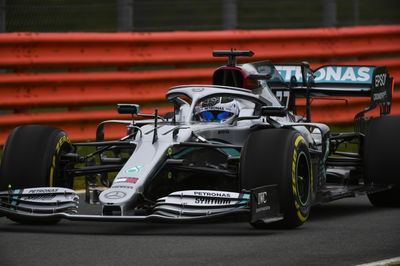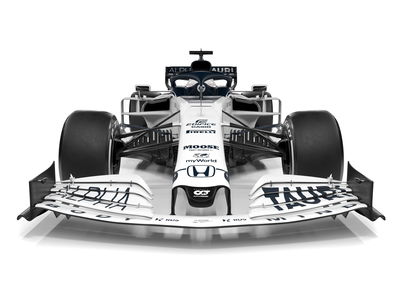Mercedes focuses 2020 engine gains on overheating weakness
Mercedes has made strides to cure its weakness racing in hot conditions which has previously hamstrung its power unit performance by installing larger radiators and making its cooling more efficient for the W11.
The reigning Formula 1 world champions launched its 2020 challenger at Silverstone yesterday, revealing key tweaks to its car concept aimed to allow greater development throughout the upcoming season.

Mercedes has made strides to cure its weakness racing in hot conditions which has previously hamstrung its power unit performance by installing larger radiators and making its cooling more efficient for the W11.
The reigning Formula 1 world champions launched its 2020 challenger at Silverstone yesterday, revealing key tweaks to its car concept aimed to allow greater development throughout the upcoming season.
Despite having stable regulations for 2020, Mercedes power unit chief Andy Cowell says its investigated “every single system” for areas to improve with the major focus centring on its engine cooling.
Mercedes has frequently suffered at extremely hot races, or races like the Mexican Grand Prix where cooling is trickier due to thinner air at higher altitude, and the trend continued in 2019.
Its first failure to claim victory in 2019 occurred at a hot Austrian Grand Prix, with Valtteri Bottas in third place and Lewis Hamilton in fifth place, before a similar pattern occurred at the Singapore and Brazilian rounds.
For 2020, the Mercedes-AMG F1 M11 EQ Performance engine has larger radiators than its predecessor while the team has focused on making cooling more efficient by getting the engine to work at higher operating temperatures.
“We are putting significant effort into making sure that all the cooling fluids on the Power Unit operate at a higher temperature,” Cowell explained. “This increases the temperature difference between that coolant fluid and the ambient temperature that we are racing in, which increases the effectiveness of the cooling system.
“That’s a tough challenge though, because large parts of the engine are made from aluminium and the temperatures that we are operating at mean the material properties are decaying quite rapidly.
“Managing that over an eight-race distance Power Unit cycle [average race span required under F1’s technical regulations] is a tough engineering challenge but that's what we are striving for.
“As Power Unit engineers we don’t just focus on crankshaft power, we also focus a tremendous amount on the packaging and reducing the overheads for the aerodynamicist, so that they can mainly focus on keeping the car planted through the corner.”
Mercedes has also targeted tighter packaging around the power unit to improve its aerodynamic scope in its ongoing strive for overall performance.
“We have had to develop an even wider area of the PU. We have looked at every single system,” Cowell added. “We have worked on a huge array of projects, and when summed together they will hopefully help propel the car around the track quicker and give the aerodynamics team more opportunities to improve as well.
“There is no such thing as perfection, there is always the opportunity to improve and all of us have that mindset.
“We’re always improving every detail - the materials, the hardware and ingredients, but also things like our design tools. You know there are areas where you can get better. Being self-critical and keeping an open mind is at the core of that mindset.”
Mercedes has estimated its 2020 power unit will be its most efficient engine, able to produce 50% thermal efficiency, up from around 44% from its 2014 power unit at the start of the V6 turbo hybrid era.
Bottas was first to get behind the wheel of Mercedes’ W11 during the team’s shakedown at Silverstone on Friday, before reigning world champion Lewis Hamilton gets his first taste of his new machinery.
The team is targeting F1 history by becoming the first team to notch up seven consecutive world drivers’ and constructors’ crowns.











